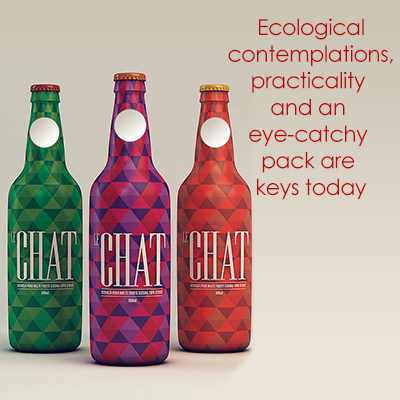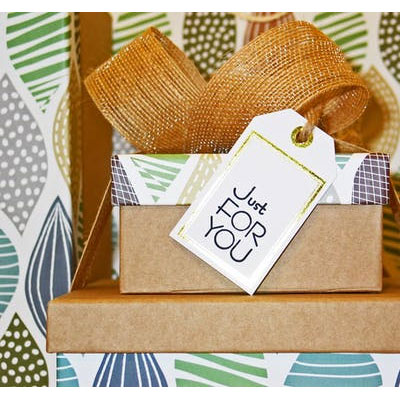Ecological contemplations, practicality and an eye-catchy pack are keys today

Simple opening components, resealability and administering helps are getting to be progressively unmistakable in bundle plan. Nourishments that can go straight into the microwave in their bundled state and bundles with novel plastic overlays that expand an item's best-before date are likewise around the new patterns.
Producers who ignore accommodation and whose items don't emerge from the swarm with high practicality and alluring appearance could soon be out of the running in an exceedingly focused worldwide business.
“Packaging solutions are now expected to feature convenience and a minimal ecological footprint,” said a delegate of the German show and bundling maker STI Group at the late Interpack exchange reasonable. STI creates its bundling for the nourishment and shopper products industry utilizing cardboard and ridged board, to a great extent getting rid of plastics. Well known to a lot of people, STI produces the bundle of the Persil clothing cleanser brand with its exceptional tear-open instrument.
In the interim, at the world's biggest customer engineering tradeshow, CES 2011 in Las Vegas, remote charging innovation was uncovered for new packaging. The innovation utilizes prompting force to make packaging which can light up in stages to make an eye-getting impact.
Lessening waste
Recyclability is one of numerous ecological contemplations that makers need to consider.One of the principal parts of packaging is to forestall more waste than it makes by lessening breakages and growing the timeframe of realistic usability of items. This is especially the case in the sustenance business where new bundling improvements have had the capacity to significantly lessen the measure of nourishment squandered in the inventory network.
As indicated by a 2010 report from Pricewaterhouse Coopers, the misfortune of sustenance items between cultivator and shopper is about 2% in the created world, however between 30 and half in the creating scene. The distinction is to a great extent attributable to present day, in fact progressed pacakging intended to safeguard new sustenance for more.
For instance, grocery stores are offering exclusively wrapped products of the soil on the grounds that the slim plastic wrapping will permit them to stay crisp for up to five times longer. Diminishments in plastics must precisely adjust the effect of item misfortunes that may come about because of the utilization of excessively small bundling also the effects of utilizing excessively.
In the course of recent decades, the bundling business has lessened the weight of packaging by more than 40% thus the vitality needed to make packaging for sustenance is presently just about 10% of the inventory network vitality used to get that nourishment to us.
By its temperament bundling is exceptionally noticeable and is something that pulls in the consideration of customers, the media and naturalists. A late report distributed by Wanaka Wastebusters guaranteed that 86% of New Zealanders are concerned by the measure of bundling waste they need to manage.
New Zealanders anticipate that the bundling business will decrease the measure of bundling waste going to landfill and to create bundling which utilizes fewer assets.
“The packaging industry is moving from looking at packaging recyclability as the only environmental criterion, to addressing the sustainability of packaging in a much broader sense, where recyclability is one consideration of many, said executive director of the Packaging Council, Paul Curtis.
It is hence that the Packaging Council of New Zealand has created a Packaging Product Stewardship Scheme for its parts. The particular goals of the plan are enhanced bundling configuration and frameworks to decrease bundling waste, expanded reuse of bundling, expanded reused substance in bundling to supplant virgin material and expanded customer mindfulness and understanding of maintainable bundling. Plan parts are obliged to receive the Packaging Council's Code of Practice for Packaging Design, Education and Procurement which is intended to help organizations deal with the now and again clashing requests of specialized execution, cost, buyer insurance and nature's turf, while perceiving the requirement for a reasonable pop culture.
Material ink jars and dark glass
Heineken has as of late collaborated with New Zealand design originator Adrian Hailwood to praise the launch of the world's first material ink can. To push this creative bundling engineering, Heineken offered customers constrained version eye-veils made by Hailwood. The cover will help purchasers to "feel" the new Heineken can in their grasp.
The new Heineken jars are accessible in six packs at grocery stores and alcohol stores across the country.An alternate brew brand – Monteith's – chosen that dark glass might be the ideal packaging decision for its new Single Source lager.Monteith's advertising administrator Russell Browne said dark glass helped make a strong-looking item with premium, refined appearance.
“Our new beer delivers unique flavours due to the specific areas in New Zealand where we source hops and barley,” said Browne.
The dark containers are generated by the world's biggest glass packaging maker, Owens-Illinois (O-I), which as of late stretched its new dark glass innovation in the Asia Pacific commercial center with the opening of another $85 million glass heater in Auckland.
“O-I’s black glass allows us the opportunity to do two things; primarily it protects our flavours from damaging UV light and secondly delivers a very distinct image on-shelf to reflect a totally different way of brewing,” explained Browne.O-I's new dark glass brew flasks are economically accessible in one configuration and two conclusion completes. The jugs are 100% recyclable and give various useful profits, including unrivaled light insurance.
Jacqueline Moth, O-I Asia Pacific’s general manager of marketing and sales, commented: “Consumers continue to be intrigued by new and innovative packaging. O-I’s black glass can be applied to all food and beverage categories to create standout products that will attract the attention of consumers in a competitive market.”
The organization utilizes more than 22,000 individuals with 78 plants in 22 nations.O-I NZ is New Zealand's just nearby glass packaging maker and has been supplying the neighborhood nourishment and drink commercial enterprises since 1922.The new heater in Auckland will additionally empower the organization to practically twofold its reusing of post customer glass – called cullet – from 84,000 to 154,000 tons for every annum. This gives a huge decrease in carbon outflows and waste going to landfill.
Steve Bramlage, O-I NZ's general chief, said the new heater might build the accessibility of provincially-made glass bundling, guarantee security of supply, and give shorter lead times and cargo efficiencies for clients.
“O-I’s new furnace uses the latest in global glass manufacturing technologies to produce quality glass packaging to meet the short-term and long-term needs and expectations of our customers as well as New Zealand consumers,” Bramlage said.
The new furnace utilizes thin neck press and blow engineering to generate light weight jugs, giving a huge decrease in vitality utilization while keeping up flask extents and premium outline prompts.“This significant investment in our Auckland plant highlights our commitment to supporting the future growth of New Zealand’s food and beverage industries,” says Bramlage.
http://www.fmcg.co.nz









